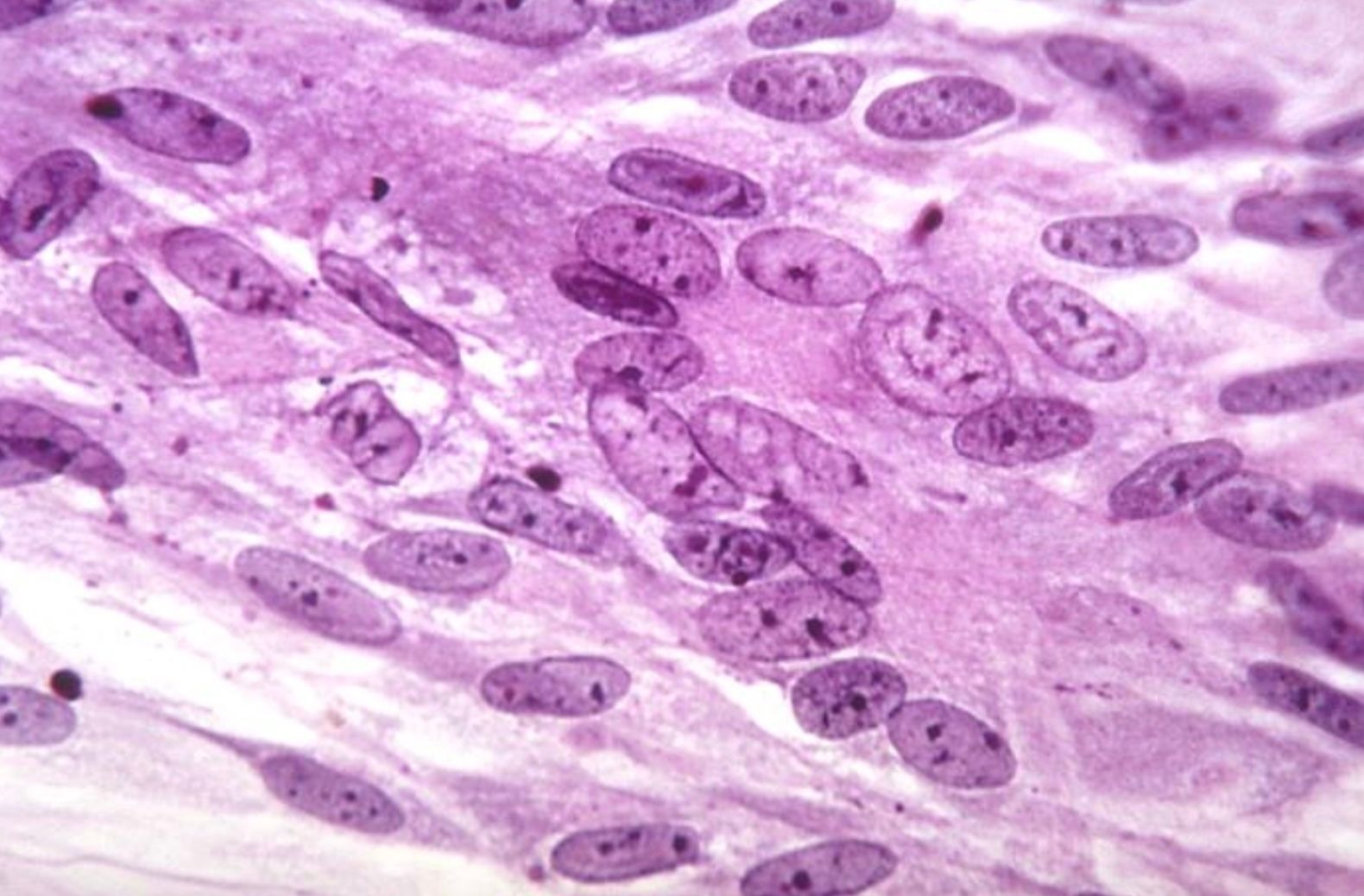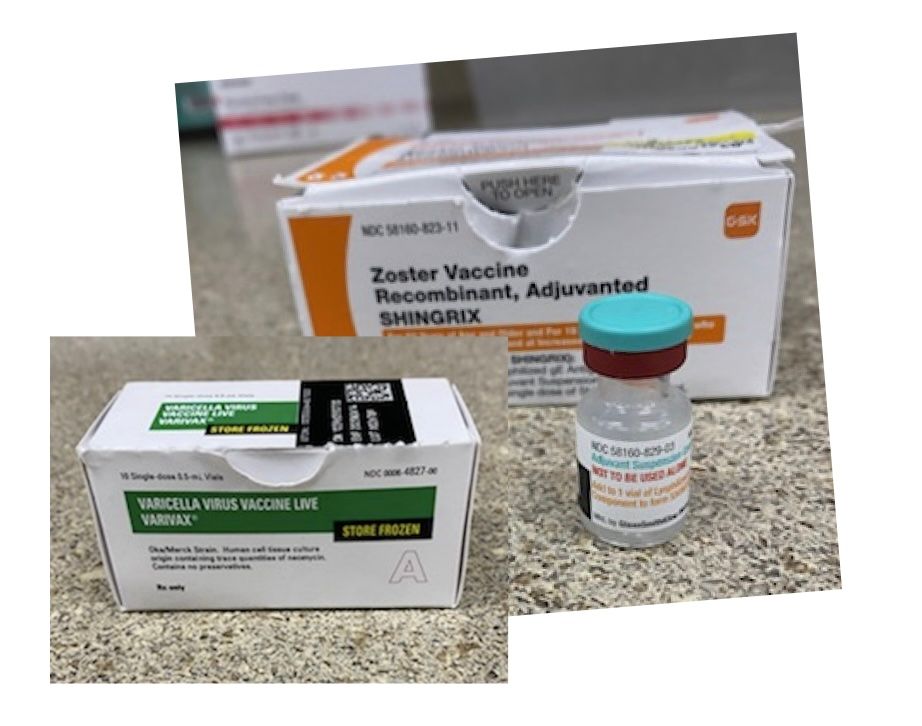Chickenpox and Shingles
Image credit: CDC's Public Health Image Library
With greater awareness of vaccines in the last few years, we thought it might be useful to review chickenpox (varicella) and shingles (zoster), two related diseases. We hope that this information will help prevent these uncomfortable, painful, and sometimes serious diseases from spreading in our community.
How are shingles and chickenpox related?
Before the chickenpox vaccine became widely available in 1995, kids would get chickenpox, a highly contagious disease that would keep them home for about a week. They'd have a rash that turned into itchy, fluid-filled blisters that would eventually become scabs.
Once a person has had chickenpox, the virus, varicella zoster, stays in their system. Years later, it can reactivate when the person's immune system starts to weaken due to age, fatigue, medications, or medical conditions, causing shingles. To note, people who have never had chickenpox can still get shingles from someone who has shingles (see the section on Spreading below). Also, not everyone who has had chickenpox will develop shingles.
Shingles typically involves an itchy and painful band-like rash on one side of the chest, abdomen, back, face or head, arm, or leg. The rash is usually very painful and lasts about a week to 10 days.
To note, the varicella zoster virus (VZV) is part of a group of viruses called herpes viruses, which includes viruses that cause cold sores and genital herpes. However, cold sores and genital herpes are caused by a different virus from VZV.
What increases the chances of getting shingles?
Factors that can increase the risk of developing shingles include:
- Age - typically higher risk over the age of 50
- Diseases or treatments that weaken the immune system - such as HIV/AIDS, cancer, Crohn's disease, rheumatoid arthritis, etc.
- Some medications - such as drugs that prevent the rejection of transplanted organs. Long-term use of steroids can also increase the risk of developing shingles.
- Older people who have head trauma - are more likely to get shingles than younger people who get head trauma. Medical professionals have made this correlation but it isn't fully understood yet.
What are the different vaccines available for shingles and for chickenpox?
The chickenpox vaccine is recommended for babies between 12 and 15 months.
For children and adults who do not have evidence of immunity to chickenpox, the CDC (Centres for Disease Control and Prevention) recommends two doses of Varivax, the vaccine against chickenpox, 4 to 8 weeks apart.
Shingrix, the vaccine against shingles, is also a 2-dose series and is recommended for people who:
- are 19 years of age and older and who have weakened immune systems
- are aged 50+
To note, even though adults younger than 50 years old get shingles, Shingrix has not been studied in people under 50, so it is not clear how effective the vaccine is for lowering the risk of recurrent shingles for younger adults.
Some kids who get the chickenpox vaccine still contract the disease, but they usually have milder symptoms. Similarly, some adults who get the shingles vaccines still contract the disease, but their symptoms can be milder.
Talk with your doctor or one of our pharmacists if you have any questions about these vaccines or whether they are covered by your insurance.
Image credit: CDC's Public Health Image Library
Keeping shingles and chickenpox from spreading
Both chickenpox and shingles can cause serious health issues, so it is best to do what we can to keep both from spreading.
Complications from chickenpox can include: streptococcal infections, pneumonia, encephalitis (shingles can cause this too), hemorrhagic complications, sepsis, etc.
If a person gets shingles on the head, it can infect the eyes, which can cause vision problems or even vision loss. About 1 in 10 people who get shingles develop nerve pain that can last for months or years after the rash goes away. Shingles can also cause facial paralysis, problems with hearing, or balance.
People who haven't had chickenpox or the chickenpox vaccine can get infected with VZV through direct contact with the fluid in shingles rash blisters or by breathing in virus particles from the blisters. 10 to 21 days after exposure, the person would develop chickenpox (not shingles) and later run the risk of getting shingles.
People who have an active case of shingles rash should stay away from others and especially from babies under 12 months old as they cannot receive the chickenpox vaccine until that age. Others to avoid include pregnant people and people with weakened immune systems. Covering the rash, avoiding touching or scratching it, and washing hands often are also good practices.
If you or a loved one has a rash that could be shingles, see your doctor as soon as possible. The sooner treatment is started, the better the duration and severity of the infection.
The best protection against getting chickenpox or shingles is getting vaccinated and staying away from anyone who is actively infected with these diseases.
So, if you're waiting for the covid vaccine to be available again (expected in the fall), it might be a good idea to look into whether getting a shingles vaccine in the meantime is right for you. This would give your body the opportunity to process one vaccine at a time.
Please feel free to drop by and ask one of our pharmacists about your specific situation. We're here for you!
References and resources
- American Medical Association on what doctors wish patients knew about shingles - https://www.ama-assn.org/delivering-care/public-health/what-doctors-wish-patients-knew-about-shingles-virus
- CDC on chickenpox - https://www.cdc.gov/chickenpox/about/index.html
- Mayo Clinic on shingles - https://www.mayoclinic.org/diseases-conditions/shingles/symptoms-causes/syc-20353054
- Mayo Clinic on getting shingles under 50 - https://newsnetwork.mayoclinic.org/discussion/shingles-more-common-after-age-50-but-can-affect-younger-people-as-well/
- CDC on shingles - https://www.cdc.gov/shingles/about/index.html
- Johns Hopkins Health on shingles - https://www.hopkinsmedicine.org/health/conditions-and-diseases/shingles
Thank you to our friend Erin A. who gave us the idea for this blog post!







